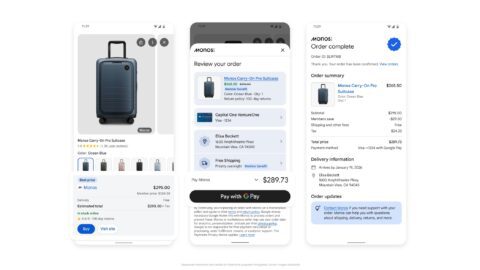On the surface, 2020 wasn’t a great year for globalization. With borders closed and travel restricted, in-person international interaction was at an all-time low. However, these physical restrictions translated into a big boost for one key form of globalization — cross-border ecommerce.
Not only were consumers shopping more online throughout the pandemic, but they were doing it around the world. For example, international online sales conducted through cross-border ecommerce solution eShopWorld (ESW) increased 82% year-over-year in 2020.
“The benefits of direct-to-consumer ecommerce have never been more pronounced than they have been since the spread of the COVID-19 pandemic,” said Tommy Kelly, CEO of ESW in an interview with Retail TouchPoints. “Brands that were advanced in their digital journey and were globally diversified have seen incredible returns and record-breaking online revenues. It’s no longer a choice to sell globally; it’s a strategic imperative.”
When the pandemic first emerged on the global stage in March 2020, initial uncertainty caused a dip in international online sales. But things quickly turned around, with cross-border ecommerce sales rebounding in April and then rising to unprecedented levels throughout the course of the year, according to ESW’s client data.
A new ESW study of more than 22,000 consumers across 11 countries, conducted by Savanta, found that 70% of those surveyed had shopped across borders last year, and 52% had made six or more international purchases. The biggest reasons given for purchasing internationally were lower cost (36%) and availability of products that couldn’t be found in the shopper’s own region (35%).
Social Media, Lower Customer Acquisition Costs Fuel Cross-Border Surge
“Social media fuels global shopping trends,” said Kelly. “A brand or product that is extremely popular in LA, for example, can very quickly catch on in other countries via social networks, driving international demand for the item. Also, consumers are often looking to buy items cross-border because those brands or goods aren’t as readily available to them in their home country.”
Markets with the highest increases in sales, according to ESW client data, were:
- The Philippines (up 258%);
- Morocco (215%);
- Chile (211%);
- Puerto Rico (203%); and
- Egypt (196%).
Other fast-growing markets included Luxembourg, Israel, Malta, Lithuania and Ireland.
“Customer acquisition was cheaper in 2020,” said Kelly. “With sales down due to the pandemic, companies cut expenses, including advertising spend. Ad prices plummeted as a result, giving brands a major opportunity to reach new customers in both domestic and foreign markets at a much lower cost than normal.”
The Key to International Selling Success? Localize and Eliminate Friction
Perhaps not surprisingly, younger, digitally native consumers are the most frequent cross-border shoppers, with the ESW consumer survey showing that those aged 25 to 34 were most likely (33%) to have made 11 or more purchases outside their home country in the last year, followed by consumers aged 35 to 44 (32%) and those aged 18 to 24 (29%).
“Younger consumers have always been more comfortable shopping online, but our survey data shows that they are now increasingly embracing international ecommerce as more retailers and brands eliminate friction by offering conveniences such as click-and-collect, return to store and promised delivery date,” said Kelly in a statement.
Regardless of the shopper demographic, the key to success when selling internationally online is creating a truly localized experience, according to Kelly.
“The experience needs to feel local and familiar,” he said. “At no time should consumers feel friction as they go through the browsing and purchase journey. They should be able to browse in their own language, view prices in the currency of their choice and clearly understand the final cost, with no surprises in the form of unexpected additional charges — whether in the checkout or at the point of delivery. From a delivery perspective, the order should arrive when it is supposed to — predictability is key. And consumers should also be able to return an item seamlessly when needed, while receiving a full, fast refund.”
Post-Pandemic, International Buying Could Continue Strong
The question now is how much of this increased international shopping will continue once the pandemic is brought under control.
“One of the more interesting trends we’ve seen this past year is that, unlike younger consumers who embraced ecommerce for its convenience, older consumers have adopted ecommerce during the pandemic primarily for health and safety reasons,” said Kelly. If these concerns linger, it could spell a longer-term spending shift to cross-border purchases.
“It may take years for the cruise and other travel industries to bring older generations back,” Kelly noted. “This will present an opportunity for cross-border consumption. Last year, instead of taking trips they might normally have gone on to buy holiday gifts in New York, Paris or London, consumers shopped those same brands online. Moving forward, many adults around the world may choose to continue buying online from U.S. brands, as they have during the pandemic. We expect that to be especially true among the older demographic.”
Brexit Effect Will Slow UK’s Cross-Border Buying
One country that is likely to see a downturn in cross-border ecommerce this year is the UK, but not because of anything to do with the pandemic. Now that the UK has exited the European Union trading bloc, additional customs checks, new tax requirements and ongoing uncertainty surrounding the terms of trade are expected to dampen the enthusiasm of both international shoppers and the sellers that cater to them.
Research from eMarketer suggests that cross-border ecommerce penetration in the UK will have reached its peak in 2020. Last year, 50% of digital buyers in the UK, 22.8 million people, made cross-border purchases online. That number is expected to decrease 7.3% to 21.1 million this year.
A few other interesting tidbits from the ESW consumer study:
- Apparel is the top category for cross-border ecommerce across all age groups. However, Gen Z and millennials are also likely to shop other categories, including health and beauty and luxury goods, more than their older counterparts.
- Millennials are the highest spenders, but Gen Z is most likely to buy directly from brands. Millennials account for nearly half (47%) of respondents who had spent more than $500 in international online purchases in the past year, followed by Gen X (27%) and Gen Z (15%). However, members of Gen Z were the most likely to visit a brand’s site directly to make a purchase rather than shop via marketplaces.
- Flexible payment options are gaining in popularity. The majority (72%) of respondents used a credit or debit card for their purchase, but younger consumers in particular are taking advantage of buy now, pay later options, with 10% of respondents aged 18 to 24 and 11% of those aged 25 to 34 saying they used flexible payment options to shop at international merchants.













